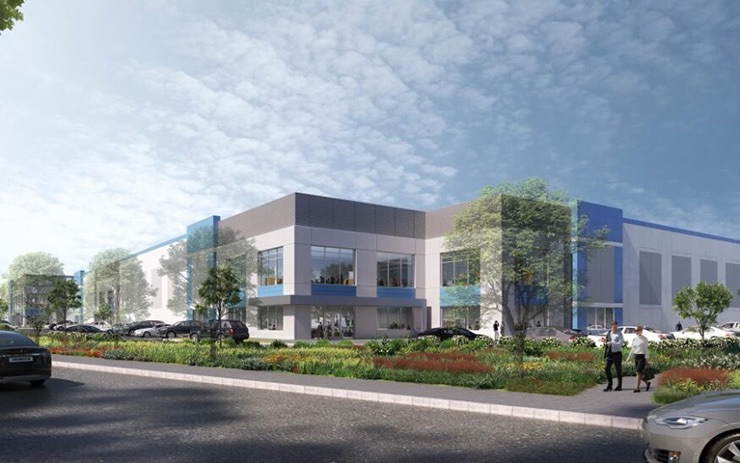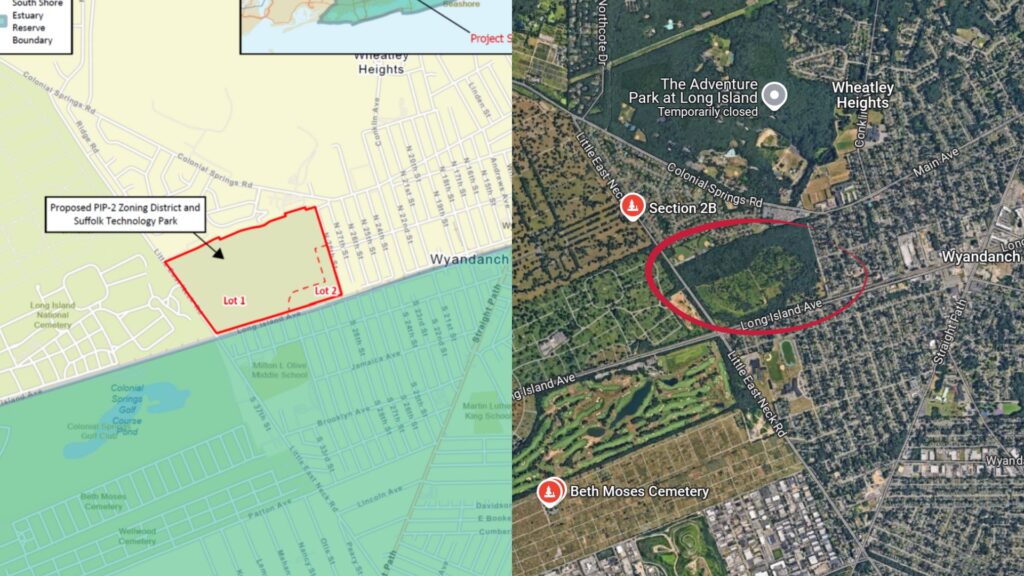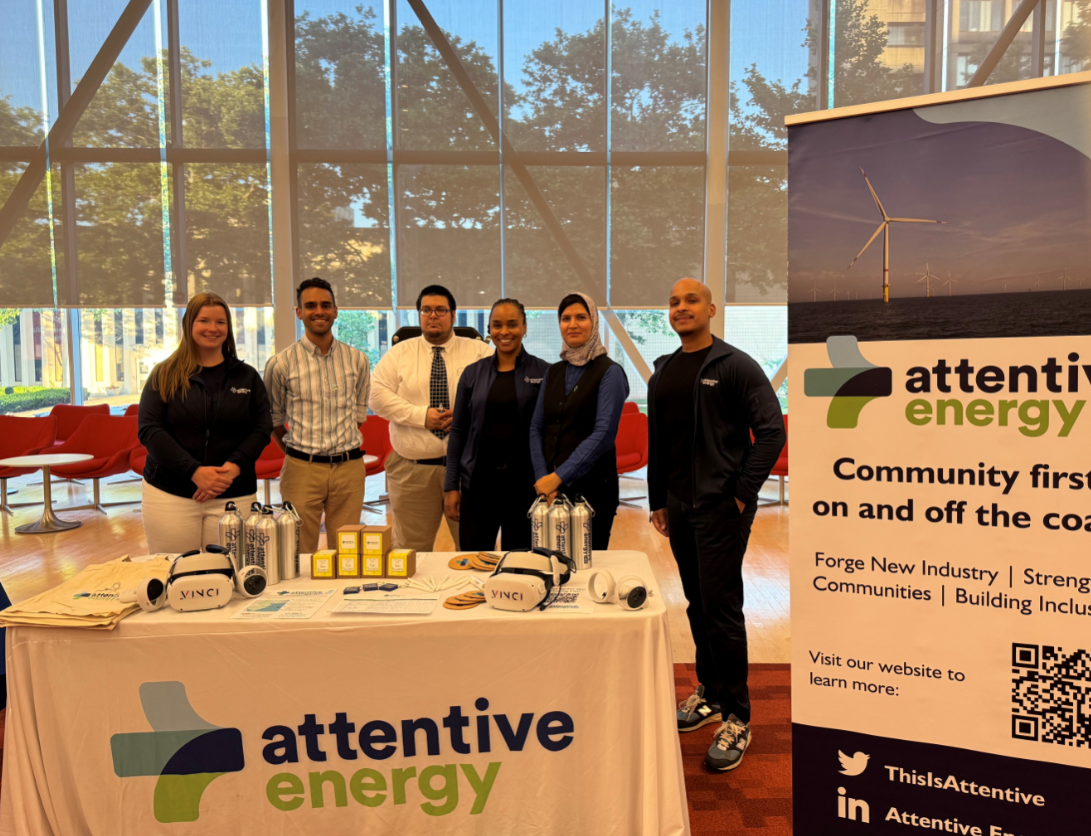Suffolk Technology Park: Progress or Promises?

Wheatley Heights, N.Y – The Suffolk Technology Park (also known as Suffolk Technology Center), a sprawling 100-acre industrial complex proposed in Wheatley Heights located within the Town of Babylon (Suffolk County, Long Island), has been the talk of the town. With promises of economic growth, job creation, and community benefits, the project has garnered both fervent support and staunch opposition. As taxpayers, it’s crucial to scrutinize the tangible and accountable benefits this project claims to offer.

Supporters’ Perspective: A Catalyst for Economic Growth
Proponents of the Suffolk Technology Park argue that the project is a much-needed catalyst for economic growth in the region. The park is expected to house nine industrial buildings, providing over 1.6 million square feet of space for small to mid-sized businesses. This development is projected to create more than 767 construction jobs and over 2,000 permanent full-time equivalent jobs. For a community that has faced economic stagnation, these numbers are nothing short of a lifeline.
Moreover, the project promises a significant boost to the local economy. The anticipated $5.6 million in annual property taxes, with $3.6 million earmarked for the Wyandanch School District, is a substantial financial injection. This influx of funds could enhance educational facilities, improve infrastructure, and provide better services to residents. Other community benefit investments include $350,000 towards renovations at the Family Life Center and turf fields in Wyandanch, nearly $200,000 for beautification projects in Wyandanch and Wheatley Heights, and the inclusion of Wyandanch Memorial High School in a community solar initiative, estimated to save the school district $150,000 annually. Benefits given to the Concerned Taxpayers of Wheatley Heights/Dix Hills civic association and Concerned Citizens of Wyandanch include $125,000 each over 25 years, plus $150,000 for holiday programs and $500,000 in scholarship money.
Supporters also highlight the park’s potential to attract businesses seeking state-of-the-art facilities. With 36-foot clear ceilings, drive-in bays, loading docks, and office space, the park is designed to meet the needs of modern enterprises. This could position Suffolk County as a hub for innovation and business growth, drawing in companies from across the region.
Opponents’ Perspective: A Mirage of Promises
On the flip side, opponents of the Suffolk Technology Park are skeptical about the project’s promises. They argue that the projected economic benefits are speculative and may not materialize as expected. The creation of jobs, while significant, may not necessarily benefit local residents if the positions require specialized skills that the current workforce lacks.
Furthermore, the environmental impact of the project cannot be ignored. The construction will involve the alteration of over 34 acres of woodland and scrub oak, potentially disrupting local ecosystems. The increased traffic and noise pollution could also degrade the quality of life for nearby residents.
Opponents are also concerned about the long-term sustainability of the project. The reliance on public funds and tax incentives to attract businesses raises questions about the project’s financial viability. If the businesses fail to thrive, the community could be left with an underutilized industrial complex and a financial burden.

Ensuring Tangible and Accountable Benefits
For taxpayers, the key to navigating this debate lies in ensuring that the benefits of the Suffolk Technology Park are tangible and accountable. Here are some steps that both supporters and opponents can agree on:
- Transparent Reporting: Regular updates on the project’s progress, financial status, and job creation metrics should be made available to the public. This transparency will help taxpayers track the project’s impact and hold developers accountable to maintain their support.
- Community Involvement: Engaging local residents in the planning and decision-making process can ensure that the project addresses community needs and concerns. Public hearings and feedback sessions can provide a platform for residents to voice their opinions.
- Environmental Safeguards: Implementing robust environmental safeguards can mitigate the project’s impact on local ecosystems. This includes preserving green spaces, reducing emissions, and ensuring sustainable construction practices.
- Workforce Development: Creating local and domestic hire goals and investing in workforce development programs can equip local residents with the skills needed to fill the new jobs created by the park. This ensures that the economic benefits are distributed equitably within the community.
- Supply Chain Localization: Establishing local contracting goals for Wheatley Heights-, Wyandanch-, and Town of Babylon-based small businesses to actively participate in the development, construction, and operation phases of the project, creating an intentional circular economy.
- Performance Metrics: Establishing clear performance metrics can help measure the project’s success. These metrics should include job creation, economic impact, environmental sustainability, and community satisfaction.
The Suffolk Technology Park represents a significant opportunity for economic growth and community development. However, it’s essential for taxpayers to remain vigilant and ensure that the project’s promises translate into tangible and accountable benefits. By demanding transparency, community involvement, environmental safeguards, workforce development, and clear performance metrics, we can navigate the complexities of this ambitious project and work towards a brighter future for Suffolk County.
###
This article is part of a taxpayer submission through Local Content Assist, a portal that helps people find clear information about local development projects in their community. It supports taxpayers who are either for or against a project but want more transparency from project owners and regulators. Local Content Assist encourages development project owners and government to provide responses that close communication gaps with data-driven insights on job creation, small business opportunities, and community investments across all phases of project development to benefit the interest of taxpayers and industry alike.
.png)
Local Content is the Next Compliance Asset Class
LocalContent.com™ transforms how public and private sector projects meet local and domestic content requirements—with technology, data, and certification solutions that build trust, unlock funding, and prove community value.
Subscribe to Local Content
LocalContent.com Announces Upcoming AI-Driven Certification Suite to Boost Supply-Chain and Workforce Compliance, Competitiveness, and Economic Opportunity
Take the free assessment instead

.png)






